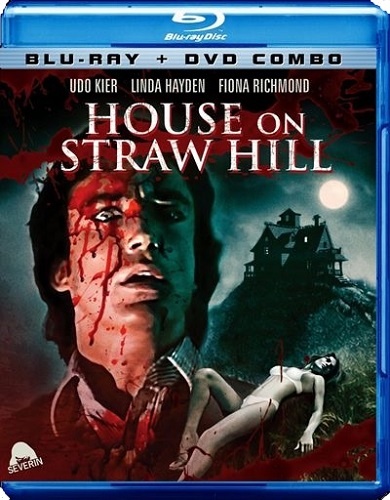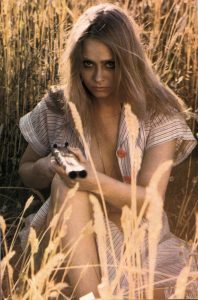House on Straw Hill (1976) Starring Linda Hayden — Movie Review
 Known as Trauma in the USA, House on Straw Hill is a British horror movie from the mid-70s. It was written and directed by James Kenelm Clarke.
Known as Trauma in the USA, House on Straw Hill is a British horror movie from the mid-70s. It was written and directed by James Kenelm Clarke.
Linda Hayden stars alongside UDO kier and Fiona Richmond. If you’ve seen any of Linda Hayden’s other movies, you won’t be surprised to learn House on Straw Hill contains scenes of sex and nudity.
In fact, with such generous helpings of sex and violence, House on Straw Hill is very much an exploitation movie. Originally considered a “video nasty” it was banned in Britain for many years.
When the ban was eventually lifted a lot of the more controversial scenes were removed before the movie was re-released on disc. The DVD Blu-Ray combo released by Severin in 2013 is believed to contain the uncut version of the movie, but Severin had to piece together portions of film taken from several sources to enable the reconstruction. That makes it less of an uncut version and more of stuck back together version.
Most of the movie is set in a remote house out in the country. Udo Kier stars as Paul Martin, a paranoid writer who thinks everyone is out to get him. Martin has rented the cottage so he can have the peace and quiet he needs to finish the last few chapters of his novel, but the deadline is fast approaching and Martin is struggling to deliver the goods.
Feeling he would be more productive if he only had to dictate his story, Martin asks his agent to send a typist, and in no time at all Martin is picking up the young lady from the local train station.
Linda Hayden plays typist, Linda, and she hasn’t been sitting in Martin’s car for very long before he asks her if they’ve met before. She says they have not, but it’s pretty easy to see there is more to the young lady than meets the eye.
Needless to say, Martin quickly develops an interest in exploring his typist’s other skills, but if she has any she shows no interest in demonstrating them to her employer, preferring to pleasure herself instead—wherever and whenever she pleases—and the scenes are explicit enough to explain at least part of the reason the movie was banned.
 The other reason was the violence. Close up shots of blades slitting throats and people being stabbed to death were far too extreme for many 1970s viewers and, in one scene, sex and violence form an unsavoury mix when two local youths discover Linda lying in the middle of a cornfield using her finger skills for something other than typing. The lads rape Linda at gunpoint but pay for their sins when Linda fondles the gun away from them and uses it to blow them away.
The other reason was the violence. Close up shots of blades slitting throats and people being stabbed to death were far too extreme for many 1970s viewers and, in one scene, sex and violence form an unsavoury mix when two local youths discover Linda lying in the middle of a cornfield using her finger skills for something other than typing. The lads rape Linda at gunpoint but pay for their sins when Linda fondles the gun away from them and uses it to blow them away.
Despite the past restrictions, modern-day viewers are unlikely to blink an eye over any of the scenes of sex and violence and may even wonder what all the fuss was about. They may also wonder if the disc was worth their investment of time and money because House on Straw Hill is not a particularly good movie.
In many ways, House on Straw Hill could be seen as a lacklustre homage to Sam Peckinpah’s Straw Dogs. Linda Hayden once stated House on Straw Hill is the only movie she regretted making. That should tell you a lot about the film.
However, if you are a fan of Linda Hayden, House on Straw Hill will be a must-see movie. If you’ve never seen a Linda Hayden movie, I suggest you begin with Blood on Satan’s Claw instead. It’s a far superior movie in every way and I can recommend it 100%.
